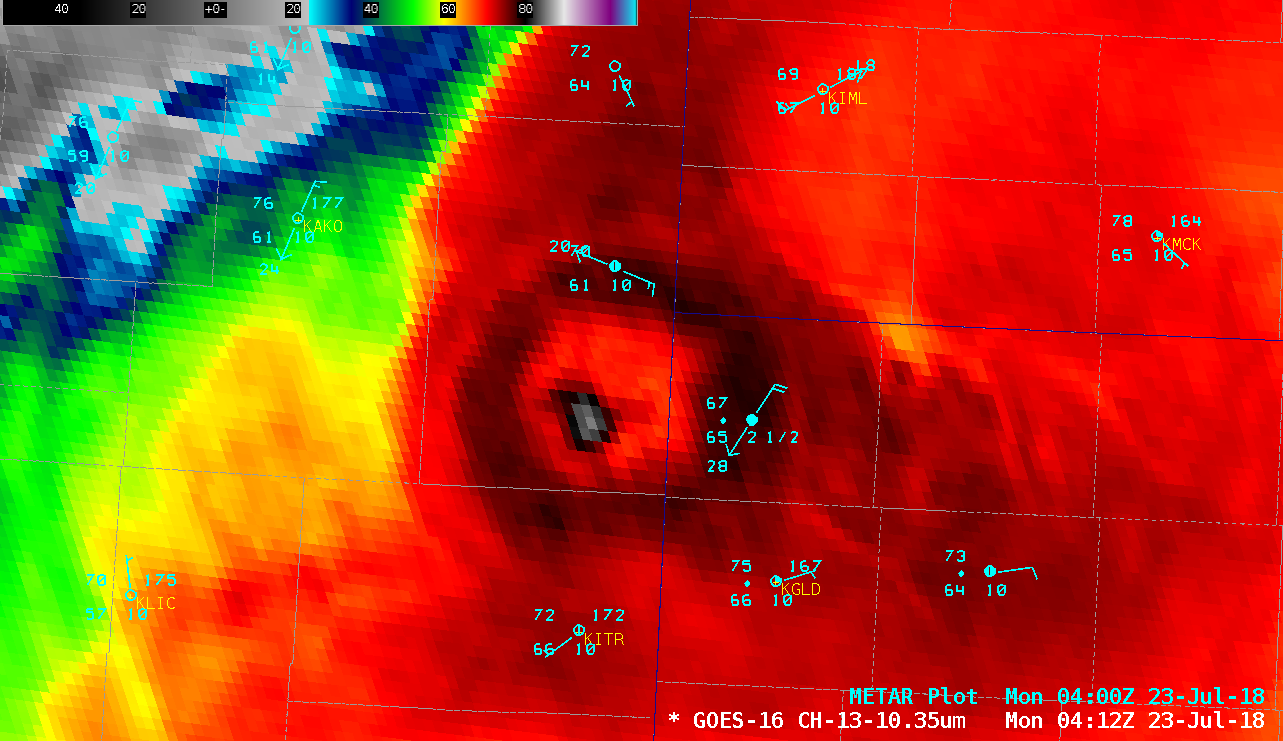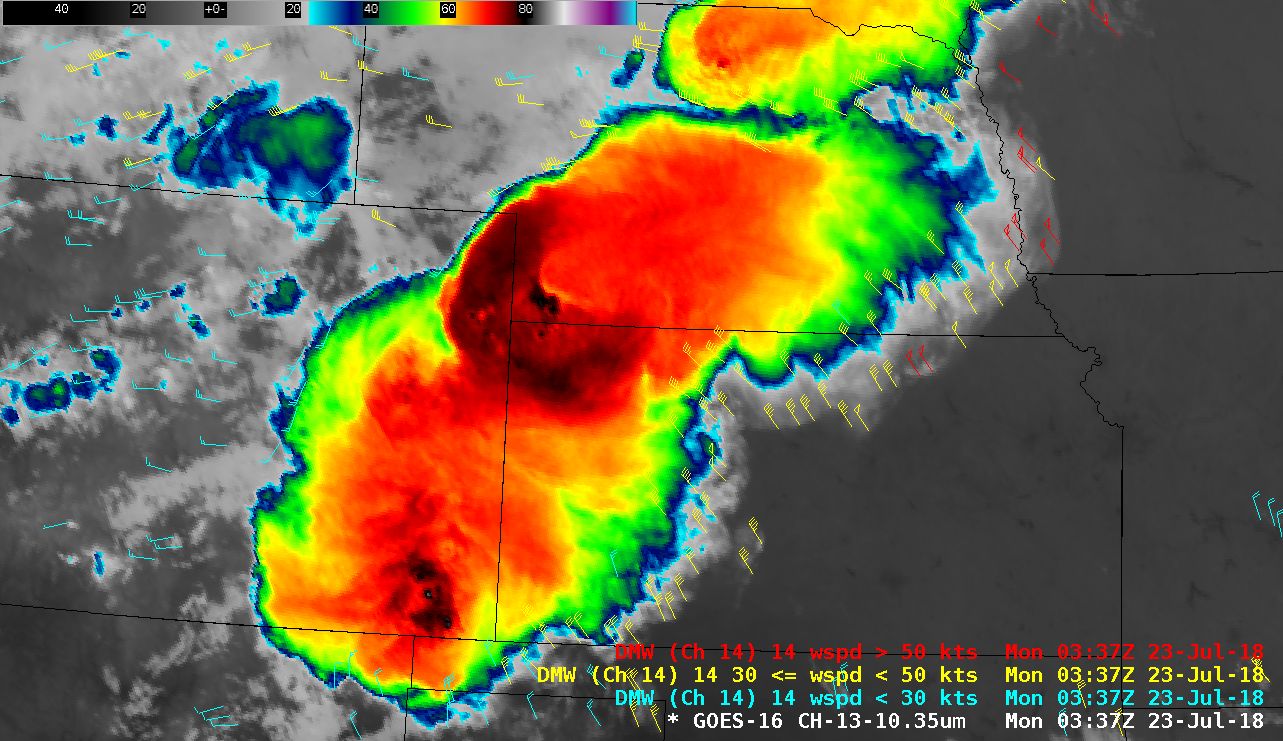Cloud-top “warm trench” infrared signature over Colorado

GOES-16 “Clean” Infrared Window (10.3 µm) images, with plots of surface reports [click to play animation | MP4]
A 250-meter resolution Terra MODIS Infrared Window (11.0 µm) imageat 0402 UTC (below) with a slightly different color enhancement showed similar delta-T values (-81ºC/-67ºC) with the overshooting top / warm trench. The diameter of the warm trench was approximately 30-40 miles.
A plot of 00 UTC rawinsonde data from North Platte, Nebraska (below) showed a tropopause temperature of -73ºC at an altitude of 15.7 km or 51,500 feet — so the much colder infrared brightness temperatures seen on GOES and MODIS imagery were indicative of a very robust overshooting top that penetrated the tropopause a significant distance. The GOES-16 Cloud Top Height product at 0412 UTC (below) indicated values of 54,000 ft / 49,000 ft for the cold overshooting top / warm trench features — however, note that the resolution of this infrared-derived product is 10 km (and the accuracy is within 1500 feet). Another interesting (and yet-to-be-explained) feature was an arc of warming cloud-top infrared brightness temperatures that was seen propagating southwestward toward the overshooting top / warm trench signature. A larger-scale view (below) showed this wave feature moving from southwestern Nebraska at around 02 UTC to southern Colorado/Kansas by 10 UTC.
GOES-16 “Clean” Infrared Window (10.3 µm) images, with 11.2 µm infrared Derived Motion Winds [click to play animation | MP4]
![GOES-16 Upper-level Water Vapor (6.2 µm) images, with 6.2 µm water vapor Derived Motion Winds [click to play animation | MP4]](https://cimss.ssec.wisc.edu/satellite-blog/wp-content/uploads/sites/5/2018/07/CO_wv_dmw-20180723_025229.png)
GOES-16 Upper-level Water Vapor (6.2 µm) images, with 6.2 µm water vapor Derived Motion Winds [click to play animation | MP4]


![Terra MODIS Infrared Window (11.0 µm) image, with plots of surface reports [click to enlarge]](https://cimss.ssec.wisc.edu/satellite-blog/wp-content/uploads/sites/5/2018/07/MODIS_IR_20180723_0402.png)
![GOES-16 Cloud Top Height derived product at 0412 UTC [click to enlarge]](https://cimss.ssec.wisc.edu/satellite-blog/wp-content/uploads/sites/5/2018/07/CO_cth-20180723_041229.png)